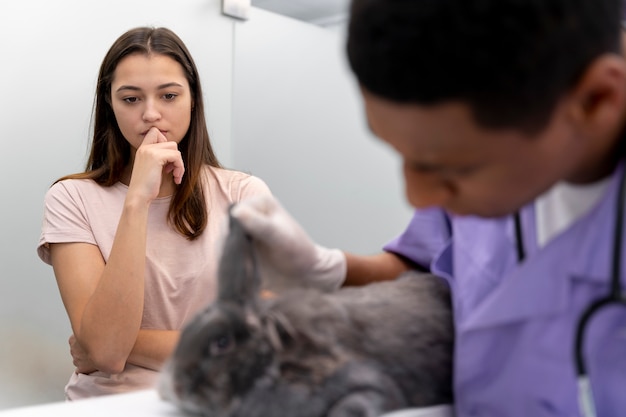Understanding Color Changes in Your Cat’s Teeth | Express Vets Holly Springs

A cat’s smile might not be as obvious as a dog’s, but their dental health is just as important. If you have noticed a color change in your cat’s teeth, you may be wondering if it’s something to worry about. While some discoloration can happen naturally with age, significant or sudden changes often point to underlying health problems that require attention. Understanding what those changes mean and how to respond can make all the difference in your cat’s long-term health and comfort.
A healthy cat’s teeth are typically white or slightly off-white. If you notice yellow, brown, gray, or even pink tones developing, it could signal trouble. One of the most common causes of yellowing teeth is plaque and tartar buildup. When food particles mix with bacteria in the mouth, they form plaque that hardens into tartar over time. This not only stains the teeth but can also lead to gum disease, pain, and even tooth loss if left untreated.
Brown or dark-colored teeth often indicate more advanced dental disease. In some cases, the discoloration is due to enamel erosion, exposing the softer, more vulnerable dentin beneath. This can make the teeth more sensitive and prone to infection. If your cat’s teeth appear gray or have dark streaks, it may also suggest that the tooth is dead or dying due to trauma or severe decay. A dead tooth can be a source of significant pain and often needs to be extracted to prevent infection from spreading.
Interestingly, a pink or reddish hue in a tooth can sometimes point to a condition called resorptive lesions. This is when the body starts breaking down the tooth structure itself, often below the gumline, causing inflammation, pain, and eventual tooth loss. Resorptive lesions are extremely common in cats and can be difficult for owners to detect without a professional dental exam.
While it might be tempting to wait and see if the discoloration goes away, doing so could allow a minor problem to develop into a major health issue. Dental disease in cats does not only cause mouth pain; it can also affect their heart, kidneys, and liver over time. Bacteria from infected teeth and gums can enter the bloodstream and lead to serious systemic illnesses.
The good news is that many dental problems, including tooth discoloration, can be addressed or even prevented with regular veterinary care. At Express Vets Holly Springs, we recommend routine dental checkups as part of your cat’s wellness plan. A thorough oral examination, combined with professional cleanings, helps remove plaque and tartar before they cause serious issues. If a color change is detected, your veterinarian can assess whether the problem is superficial or deeper, possibly recommending dental X-rays for a full evaluation.
At home, you can support your cat’s dental health by brushing their teeth regularly with a pet-safe toothpaste, providing dental-friendly toys or treats, and monitoring their mouth for any signs of trouble. However, even the most diligent home care cannot replace the need for professional veterinary dental exams.
Your cat relies on you to notice changes in their health, and tooth discoloration is one warning sign you should never ignore. If you see any unusual color changes in your cat’s teeth, don't hesitate to schedule an appointment. Early diagnosis and treatment can save your cat from pain and prevent more serious complications in the future. Trust the team at Express Vets Holly Springs to help keep your feline family member smiling bright for years to come.
If you notice color changes in your cat’s teeth or want to schedule a routine dental exam, contact Express Vets Holly Springs today at (678) 402-8717 or visit us at 6244 Holly Springs Parkway Suite D,Holly Springs, GA 30188. Our caring team is ready to help your cat maintain a healthy, happy smile!



















